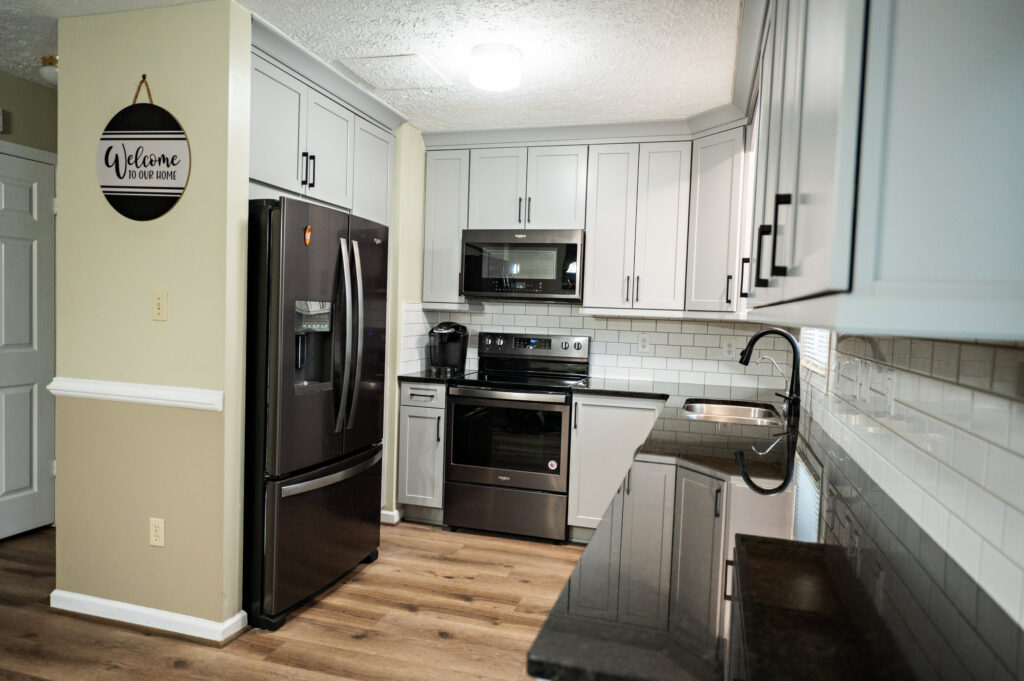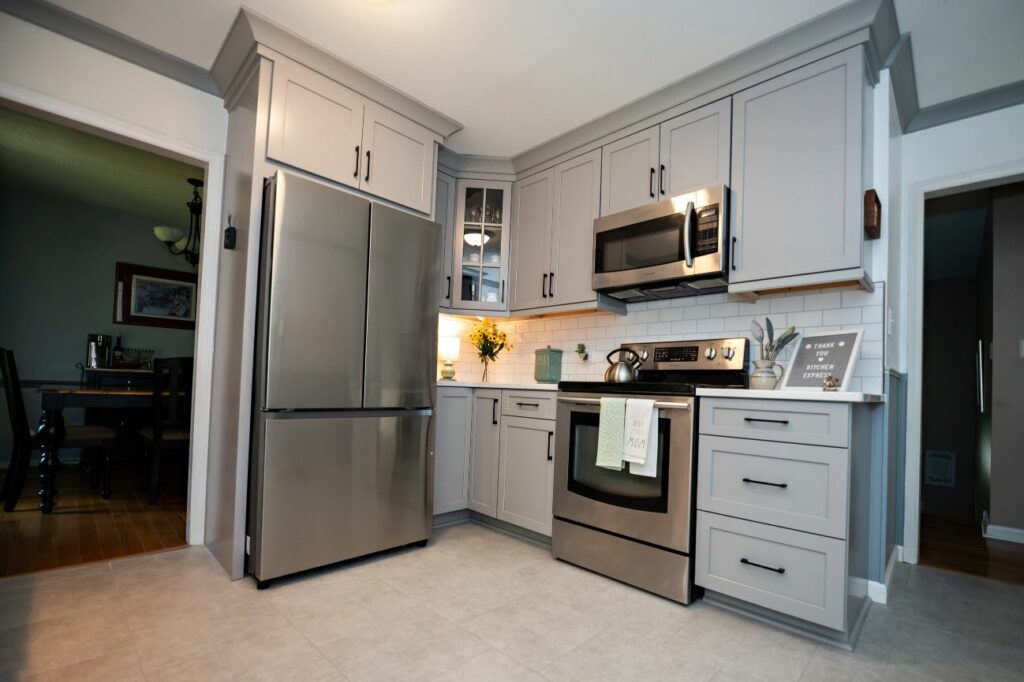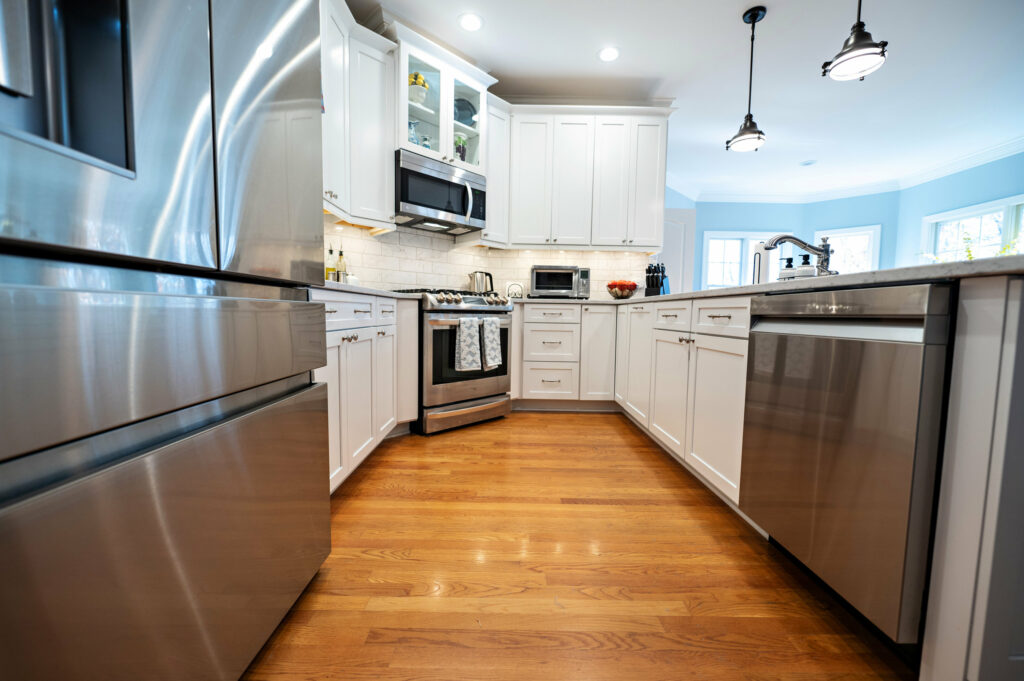When it comes to remodeling your kitchen, figuring out the perfect spot for your stove and refrigerator is like solving a puzzle. You want your kitchen to look good and work well. Placing these big appliances wisely can make cooking easier and keep your energy bills down. In this guide, we dive into the kitchen layout world, exploring how close your stove and fridge should be, and the best spots for these essentials in your cooking space.
Kitchen Appliance Arrangements
When planning your kitchen layout, deciding whether to place the stove next to the refrigerator is a common dilemma. On one hand, this setup can save space and make your kitchen look neat. It simplifies moving between the cooking area and the fridge, which is handy for grabbing ingredients quickly. However, there are downsides to consider. The heat from the stove can make the refrigerator work harder to maintain its cool temperature, potentially leading to increased energy consumption and higher bills. This setup can also shorten the lifespan of your refrigerator because it’s constantly exposed to heat.

Moreover, safety is a key consideration. Heat from the stove can cause perishables in the fridge to spoil faster, posing a risk to food safety. The proximity can also be hazardous if the stove’s heat affects the refrigerator’s electrical components, increasing the risk of malfunctions or even fires.
From a design perspective, having a stove next to the refrigerator can limit your workspace and make the kitchen feel cramped. It’s important to have enough counter space between major appliances to prepare meals comfortably and safely.
Therefore, while placing a stove next to a refrigerator might seem like a good use of space, especially in smaller kitchens, it’s crucial to weigh the practical implications. Energy efficiency, appliance longevity, safety, and usability should all be considered in your kitchen design. Consulting with a kitchen remodeling expert can help you find the optimal layout for your appliances, ensuring a functional, safe, and aesthetically pleasing kitchen environment.
How far should the fridge be from the stove?
The distance between your stove and fridge is more important than you might think. It’s not just about making your kitchen look good; it’s about safety and making sure everything works well together. Kitchen design experts suggest that the ideal space between a stove and refrigerator should be at least a foot, but ideally more like 3 to 4 feet. This gap helps to keep the heat from the stove from making the fridge work too hard.
Having enough space between these appliances also means you’ll have a safer kitchen. When a stove and fridge are too close, the risk of accidents increases. For example, opening the fridge door while the stove is on could lead to spills or burns. Plus, the extra space can help prevent any electrical issues that could arise from having these two appliances too close to each other.

Functionality is another key reason for keeping a good distance between your stove and fridge. More space means you’ll have a better workflow in the kitchen. You can move more freely, have additional counter space for meal prep, and not feel cramped. This setup makes cooking and accessing your fridge easier and more efficient.
In summary, while your kitchen’s size and layout will ultimately dictate the exact distance between your stove and refrigerator, aiming for 3 to 4 feet of space can enhance safety, functionality, and the overall efficiency of your kitchen. Consulting with a kitchen remodeling expert can help tailor these guidelines to fit your specific space, ensuring a kitchen that’s both functional and safe.
What should you put between the stove and refrigerator?
Utilizing the space between the stove and refrigerator efficiently is crucial in a well-organized kitchen. This area, if planned correctly, can significantly enhance your kitchen’s functionality and aesthetic appeal. One practical solution is to install cabinets or shelving units. This not only offers additional storage space for kitchen essentials but also helps in keeping the countertop clutter-free. Cabinets can store cooking utensils, spices, or other necessities, making them easily accessible during meal preparation. Opting for custom cabinetry allows for a tailored fit and design, seamlessly integrating with your kitchen’s style while optimizing the available space.
Another excellent option is creating a prep area in this space. A small countertop segment can serve as a dedicated zone for food preparation, providing a convenient spot for chopping, mixing, or assembling ingredients. This setup ensures that the primary work triangle of the kitchen—comprising the stove, sink, and refrigerator—is maintained without disruptions, facilitating a smoother cooking process.

Incorporating a pull-out pantry or spice rack between the stove and refrigerator is another savvy idea. This maximizes the use of vertical space and provides easy access to condiments and pantry items. It’s a smart move for those who value efficiency and organization in their cooking routine.
Additionally, for kitchens where space allows, a freestanding piece of furniture like a kitchen island or cart can be placed between these appliances. This not only adds to the storage options but also offers an extra work surface or a casual dining area
Ultimately, the key to optimizing the space between the stove and refrigerator lies in understanding your kitchen’s workflow and selecting an option that enhances functionality. Whether it’s additional storage, a prep area, or a multi-functional piece of furniture, the right choice can transform this often-overlooked space into one of the most functional areas of your kitchen.
Conclusion
In conclusion, the strategic placement of appliances in the kitchen, particularly the stove and refrigerator, significantly influences the functionality, safety, and aesthetic appeal of the space. Keeping an optimal distance between these appliances ensures efficient operation, while thoughtful utilization of the intervening space can enhance the kitchen’s workflow and storage capacity. Whether it’s through adding cabinetry, creating a prep area, or integrating smart storage solutions, every decision should aim to make the kitchen a more practical and enjoyable place to cook and gather. Remember, a well-planned kitchen layout not only makes meal preparation easier but also turns the kitchen into the heart of the home, where functionality meets comfort. Consulting with a kitchen remodeling expert can provide tailored advice to achieve the perfect balance in your kitchen’s design.
